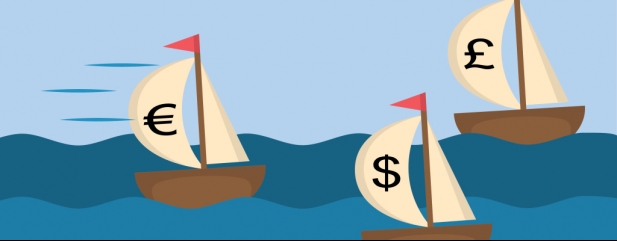Archived article
Please note that tax, investment, pension and ISA rules can change and the information and any views contained in this article may now be inaccurate.
Why Europe could be set to play catch up with UK and US on rates

Eurozone inflation surprised to the upside for the seventh consecutive month in January, rising to a record 5.1%, far above the central bank’s 2% target.
The unexpected data seems to have finally persuaded European Central Bank (ECB) president Christine Lagarde to ditch her ‘transitory’ inflation narrative which brings the bank into line with the Bank of England and US Federal Reserve.
Both the UK and US central banks have signaled their willingness to hike interest rates more aggressively to deal with stickier than expected inflation with the Bank of England pushing through back-to-back increases.
The direction of travel for UK rates seems clear given that four of the nine Bank committee members wanted to push through a 0.5% hike instead of 0.25%.
While Lagarde highlighted key differences between the eurozone and the economies of the UK and the US, which has seen a bigger jump in consumer demand, Lagarde didn’t dismiss the idea of raising rates later this year and said the risks were tilted to the upside.
The U-turn opens the door to rate rises, possibly before the end of the year, with bond markets quickly pricing in the possibility by pushing bonds yields higher.
According to Bloomberg data, markets are pricing in a zero-deposit rate by the end of 2022 compared with the current rate of minus 0.5%.
In recent weeks the benchmark 10-year German bund yield has been nudging into positive territory for the first time since the start of the pandemic and today it stands at 0.25%. The hawkish tone gave a boost to the euro which has rallied by 1% against the US dollar.
The hawkish pivot by the ECB had an immediate and unwelcome impact on Europe’s peripheral debt markets which saw increased selling. This has pushed up Italian 10-year government bond yields sharply in recent days from 1.45% to almost 1.84%.
The implied spread between German and Italian 10-year yields has widened to 1.6% for the first time since the Autumn of 2020 reflecting increased fear over the Europe’s most indebted members. A year ago, the equivalent spread was 0.9%.
Italy is Europe’s third largest economy and one of the most indebted with government debt equivalent to 155% of gross national product in 2020 up from 135% before the pandemic.
If the ECB does move on rate increases, they are expected to happen towards the end of 2022, some time after the central bank ends its asset purchase programme in June.
Important information:
These articles are provided by Shares magazine which is published by AJ Bell Media, a part of AJ Bell. Shares is not written by AJ Bell.
Shares is provided for your general information and use and is not a personal recommendation to invest. It is not intended to be relied upon by you in making or not making any investment decisions. The investments referred to in these articles will not be suitable for all investors. If in doubt please seek appropriate independent financial advice.
Investors acting on the information in these articles do so at their own risk and AJ Bell Media and its staff do not accept liability for losses suffered by investors as a result of their investment decisions.
Issue contents
Editor's View
Feature
Great Ideas
- Google-owner does the splits as it smashes Q4 expectations
- Grab a great buying opportunity in Gamma Communications
- Pets At Home's new CEO is a great hire and the shares are still a buy
- Our buy call on Shell is up nearly 20% in two weeks
- Take advantage of Smithson’s stumble and top up
- Virgin Wines’ share price slump looks overdone
- This value-tilted global fund is now outperforming
 magazine
magazine








